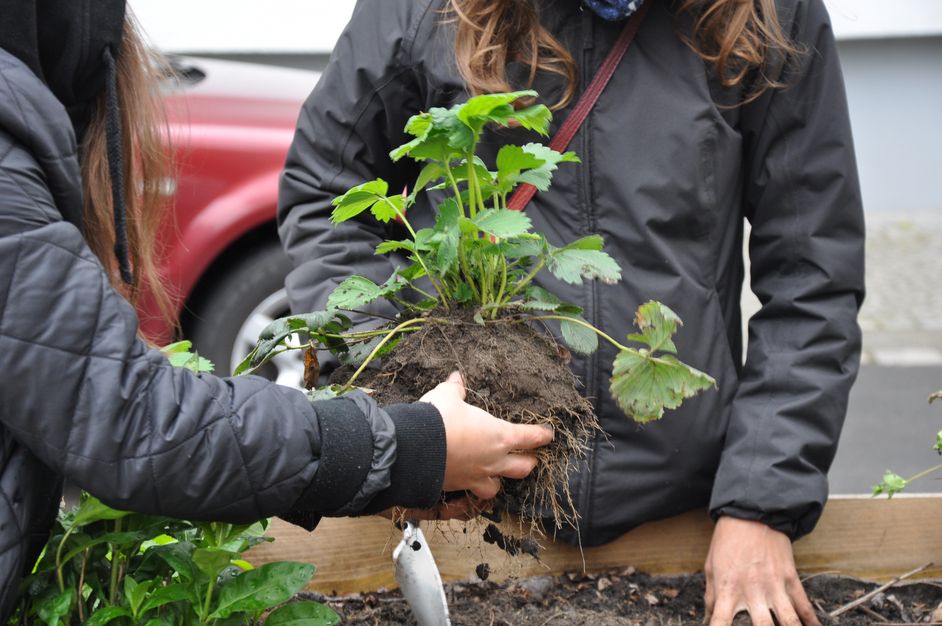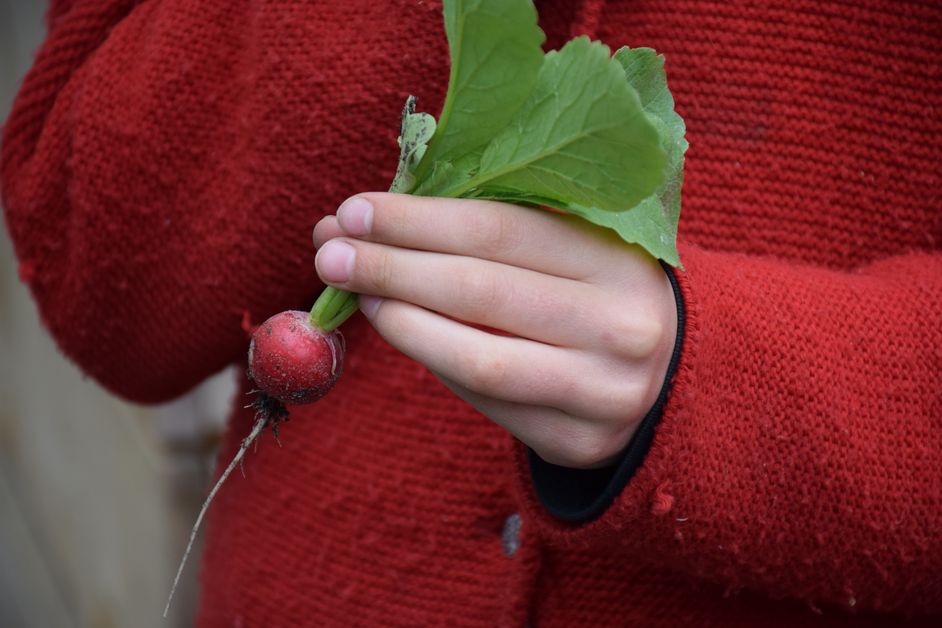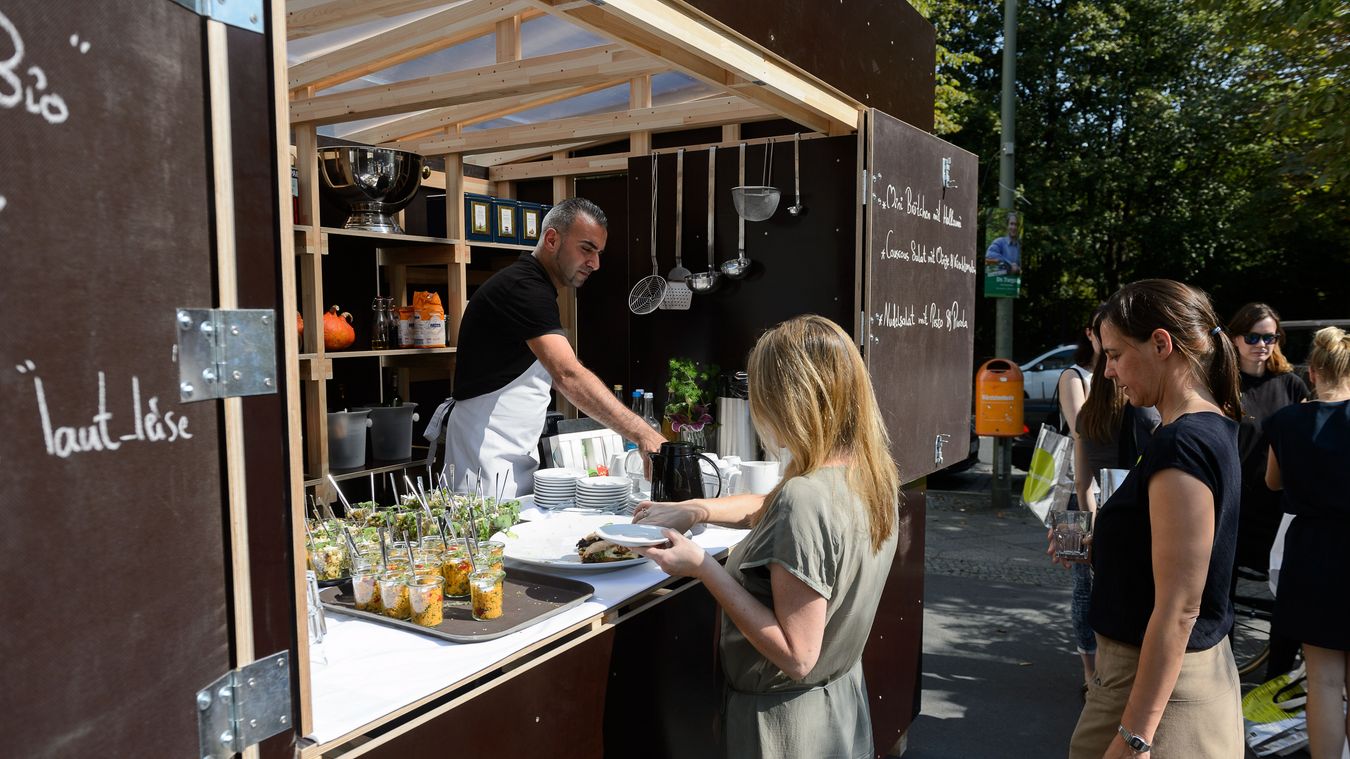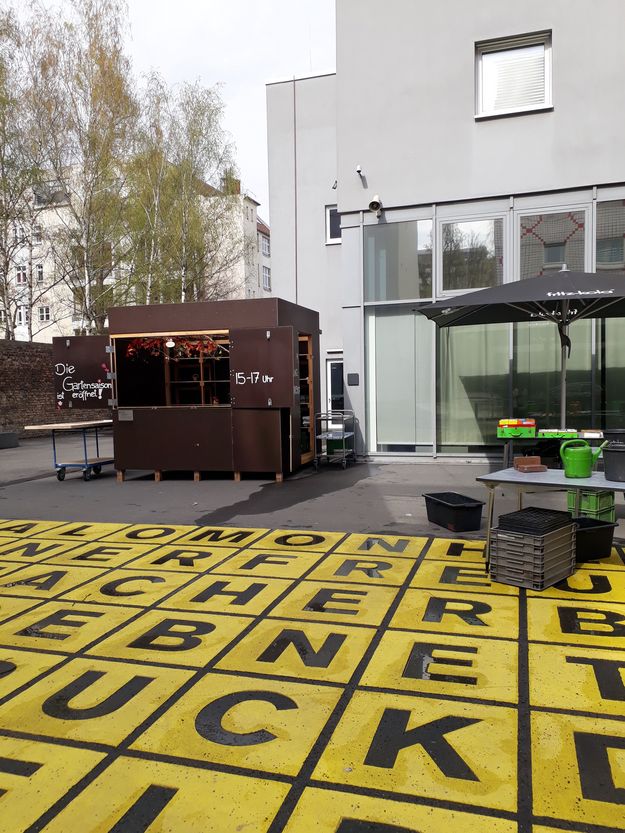A garden for everyone
In the summer months we plant flowers, herbs and vegetables in our forecourt together with Prinzessinnengärten.

The urban gardening scheme is one of a wide range of activities initiated while the museum was being renovated in 2014/2015. Various projects were devoted to exploring the urban environment around the Berlinische Galerie and reflecting on the relationship between culture and nature.
Ever since then, anyone interested has been welcome to join in during the summer months, in the spirit of urban gardening, by tending flowers, herbs and other plants either on their own or in organised workshops. Local groups, neighbours and families help to form teams of experts, contributing their know-how, suggestions and resources to the community that designs and uses the soil beds.
School groups at events run by our studio for children, the "Atelier Bunter Jakob", also come out into the garden to do research. Sustainability, natural urban biodiversity and the role of nature in the city can be experienced here in practical ways with a sensory appeal, for example by learning how to handle seeds or build insect hotels.
People of every age, from the immediate neighbourhood or further afield, are welcome to help create this open garden.
Prinzessinnengarten
Since 2015 the Berlinische Galerie has been working on the community garden outside the museum together with "nomadisch grün" and the "Prinzessinnengarten".
As urban gardeners, they bring true professional expertise into the partnership: the Prinzessinnengarten is a social and ecological urban farm on Moritzplatz, not far away in Kreuzberg. It was set up on waste land that had been lying fallow for decades, and now the community there grow over 500 types of herb and vegetable right in the middle of the city. It all began in summer 2009, when more than a hundred volunteers banded together to clear away the rubbish lying around the abandoned site. Since then, thousands of people have helped to transform a forgotten waste land into a flourishing kitchen garden. In a district with a dense population, not much green and lots of social problems, this social and ecological farm in the heart of town is a place where children, teenagers, adults, neighbours, keen amateurs, passionate gardeners and lovers of the great outdoors – in fact, anyone – can learn together how to grow food locally and create a new cradle of urban life.



The Maxischrank
The Maxischrank, or “maxi-cupboard”, has graced the forecourt of the Berlinische Galerie since September 2016. This small, functional piece of architecture was designed by the architects and landscape designers Holger Lindmüller and Grégoire Tourne in partnership with the landscape architects atelier le balto.
The Maxischrank (2.80 m long, 2 m wide, 2.60 m high) is a walk-in space with two doors. It contains shelves to store garden tools, materials and furniture for our gardening and education events. Apart from functioning as a little shed, on special occasions the Maxischrank can serve as a bar. Two windows are opened for the purpose, creating a hatch and a counter with a flick of the wrist. The cupboard is intended for use during activities in the museum garden or as part of the programme for young people run by Atelier Bunter Jakob. As an outdoor feature of the Berlinische Galerie, it is also a fitting addition to the raised beds along the “Garden Parade” installed by atelier le balto in 2014.
The Maxischrank was built thanks to the kind support of the Ilse Augustin Stiftung.